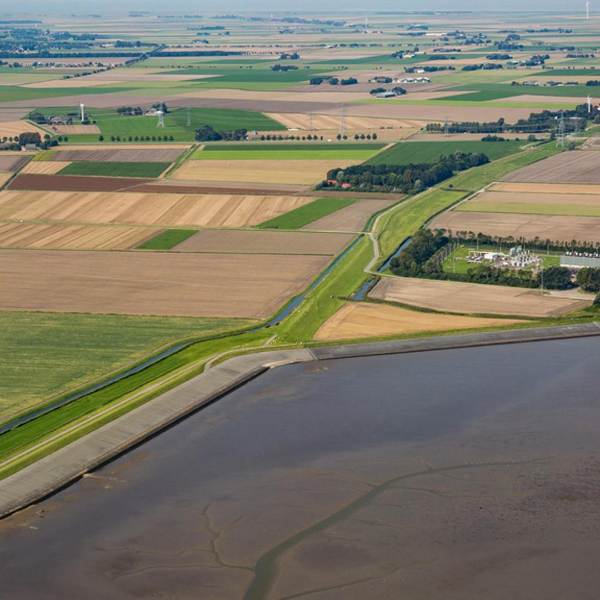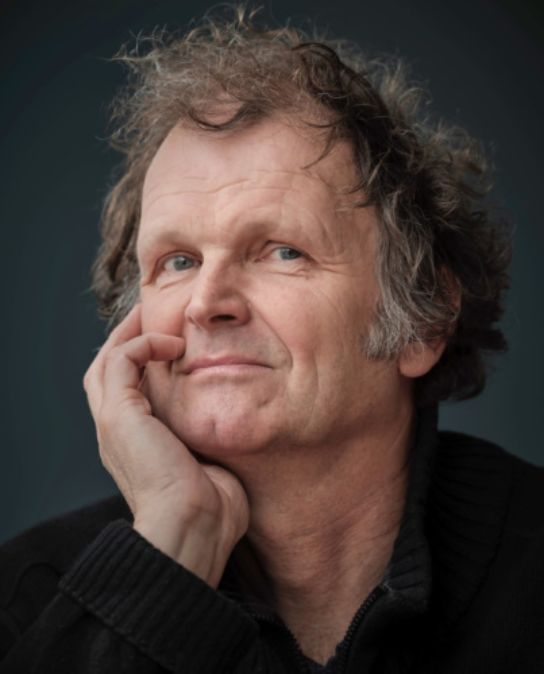René Didde’s moonshot idea: From band-aid solutions to genuine water retention measures

René Didde’s moonshot idea: From band-aid solutions to genuine water retention measures
In 1962, President John F. Kennedy made an inspiring, bold speech – also known as the Moonshot Speech – that rallied the United States behind a costly but highly successful space programme in which thousands of Americans pooled their knowledge, insights and energy to put the first man on the moon. We could use some of that ‘moonshot thinking’ in water management today. To wrap up and build on the Climate-Robust Water Systems webinar series, we are asking a variety of people from the world of science and water management to share their own moonshot ideas as well as what they are doing to achieve them. This time, we spoke to René Didde.
For many years, he interviewed scientists, water managers, administrators and politicians for De Groene Amsterdammer, Hervormd Nederland, de Volkskrant and other Dutch publications on a wide range of issues relating to sustainability and the environment. Following the publication of 'Nederland Droogteland' (‘The Netherlands: Drought Country’), he became the one fielding the questions. To produce the book, Didde spent a year delving into the complex issue of drought. He came up with a series of recommendations that can help us find ‘A Way out of the Drought’ – as the final chapter is called.
Who are you and what drives you as a journalist?
Once upon a time, I studied environmental health at Wageningen University. From there I went into journalism, focusing in particular on environmental and sustainability issues. I enjoy writing about these topics – in a non-populist way. In fact, I may be the only journalist in the Netherlands who sometimes literally drags journalism ‘into the gutter’. I really immerse myself in my subjects and I’m fascinated by innovation – especially eco-modernist solutions that have been on the rise in recent years, such as natural breakwaters, the Sand Motor and Building with Nature. Eco-modernists believe that the modernisation of society doesn’t have to be a threat to sustainability, but can rather help to promote it.

What is your moonshot idea?
Once upon a time, I studied environmental health at Wageningen University. From there I went into journalism, focusing in particular on environmental and sustainability issues. I enjoy writing about these topics – in a non-populist way. In fact, I may be the only journalist in the Netherlands who sometimes literally drags journalism ‘into the gutter’. I really immerse myself in my subjects and I’m fascinated by innovation – especially eco-modernist solutions that have been on the rise in recent years, such as natural breakwaters, the Sand Motor and Building with Nature. Eco-modernists believe that the modernisation of society doesn’t have to be a threat to sustainability, but can rather help to promote it.
What do we need to do to achieve that?
What I learned from working on my book is that we actually already have a lot of knowledge on our water-and-soil system that can help solve the drought problem and potentially many other problems, such as carbon and nitrogen emissions. What we need is for conclusions to be drawn at the political and administrative level so that this knowledge is anchored in policy, laws and regulations. We also need the government to take a much more centralised approach to managing local area processes, like the Dienst Landelijk Gebied did for decades. And to actually get down to work. Work with all stakeholders, led by the central government, to identify ten drought hotspots in a region and turn them into ten wet spots within a few years.
How can representatives of water authorities, engineering firms and research institutes, science journalists, etc. contribute towards this?
I hope that my articles and publications raise awareness among readers and encourage them to do things differently – policymakers and politicians, scientists and water managers, but also ordinary citizens. For example, that people realise that they have to use water sparingly.
How do you, as an individual, contribute to the water transition and to solving the drought problem?
For my book I spoke to Jelle Hannema, the director of Vitens. One of the things we talked about was ‘Panorama Waterland’, an ambitious plan to make the Sallandse Heuvelrug completely self-sufficient. It turned out that we both have the same showering habit: while the water temperature warms up, we collect the water that would otherwise go down the drain in a bucket and use it to water the plants. Writing this book has made me acutely aware that water is a precious commodity.
What would be your message to water professionals, water managers and politicians?
As a country with an abundance of water, ‘poldering’ – both in its literal and figurative sense – has become second nature to us. But that has often also led to band-aid solutions. It’s now high time that we stopped patching things up and started implementing genuine measures to improve water retention.
